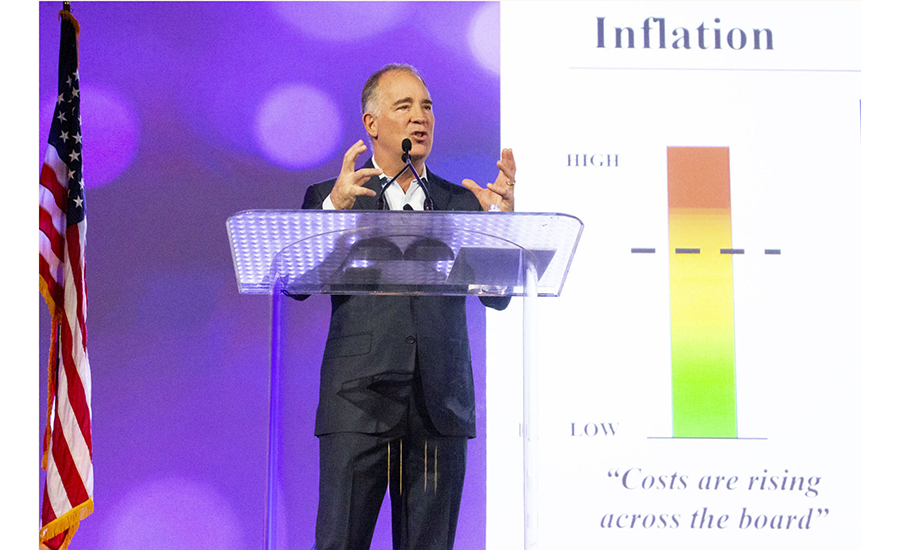With many of this year’s SDM 100 companies expressing concerns about inflation, rising costs and price increases from their suppliers, Mike Barnes, president of Barnes Associates, addresses the need to consider raising installation AND monitoring prices.
The security alarm industry continues to march forward, with strong results in 2022, which can been seen in the data provided in the SDM 100 list and elsewhere. The industry showed its chops during the pandemic and has rebounded nicely with the growing economy. The average player is leaner, meaner, and better equipped to handle change.
Good. Because on top of the challenges associated with disrupted and distorted labor markets and supply chains, a new one is looming large — inflation. Uncle Sam helicopter sprayed $5 trillion dollars into the economy during the pandemic, and the velocity at which it is circulating has increased. The resulting effects are likely to continue for quite some time. The resulting increases in costs, virtually across the board, are like the tide, slow but inexorable.
The First Layer of Defense
A quick look at the data shows that average inflation was 8 percent in 2022 (on top of 5 percent in 2021); and while it is down a bit in early 2023, still very high. To put this into context, this is two to four times the rate experienced, on average, over most of the last 40 years. We haven’t seen this rate of cost inflation since 1981, which is far enough back that the vast majority of today’s management has no direct experience with the consequences.
To a degree, the pandemic and the challenging labor market leading up to it, was a bootcamp. The natural first layer of response is to increase prices on the sale and installation of new systems. Most companies are familiar with both the value proposition the systems provide and the competitiveness of their markets. Additionally, most use a pricing book that naturally adjusts to higher labor and equipment cost inputs. During the pandemic we saw installation fees increase substantially relative to underlying costs; and for the most part the industry has held on to these increases even with the economy reopened. With overall industry growth continuing to be strong, there is ample evidence that demand is relatively inelastic. That is, it remains relatively constant even at higher (or lower) prices. So, step one is to make sure your price book is working and that it adjusts to what are almost certainly going to be increasing cost inputs.
Exercising a New Muscle
Sales and installation fees are only half of the industry’s revenues, however. The other half is associated with the recurring revenues (RMR) and the related time and material based service billings. These need to be increased as well. Especially since they represent the majority of the profits and value of the industry. Our research indicates that at best, these rates have been increased on average only at a 1 percent to 1.5 percent rate per year (i.e. at roughly the normative inflation rate). Doing increases year on year at a much higher rate requires additional skills.
Your primary variables will be identifying who gets them, when, and for how much. There are a number of schools of thought, ranging from the “large increases periodically” to the “drip feed” approach. They both work. When working through the details for your company, here are three overarching suggestions:
- Don’t dawdle. Formulate a thesis, work out the details and implement.
- Train your people across the board in how to respond to customer push back.
- Track the relevant data and have regular review sessions to perfect the process. The military has a great framework for doing this type of thing — The OODA loop, which teaches to Observe, Orient, Decide, Act… and, then repeat.
Underneath your business your costs are almost certainly rising, and in a way that is likely to be permanent. You provide a highly valuable service, that your customers need and appreciate more than you think. Raise prices.
Get at it.


Recent Comments
Wonderful Content! The way you describe the things...
amazing and very impressive dear check...
SOC Teams Protect Multi-Building Campuses
Smart Home Revolution
Benefits of Implementing 802.3bt